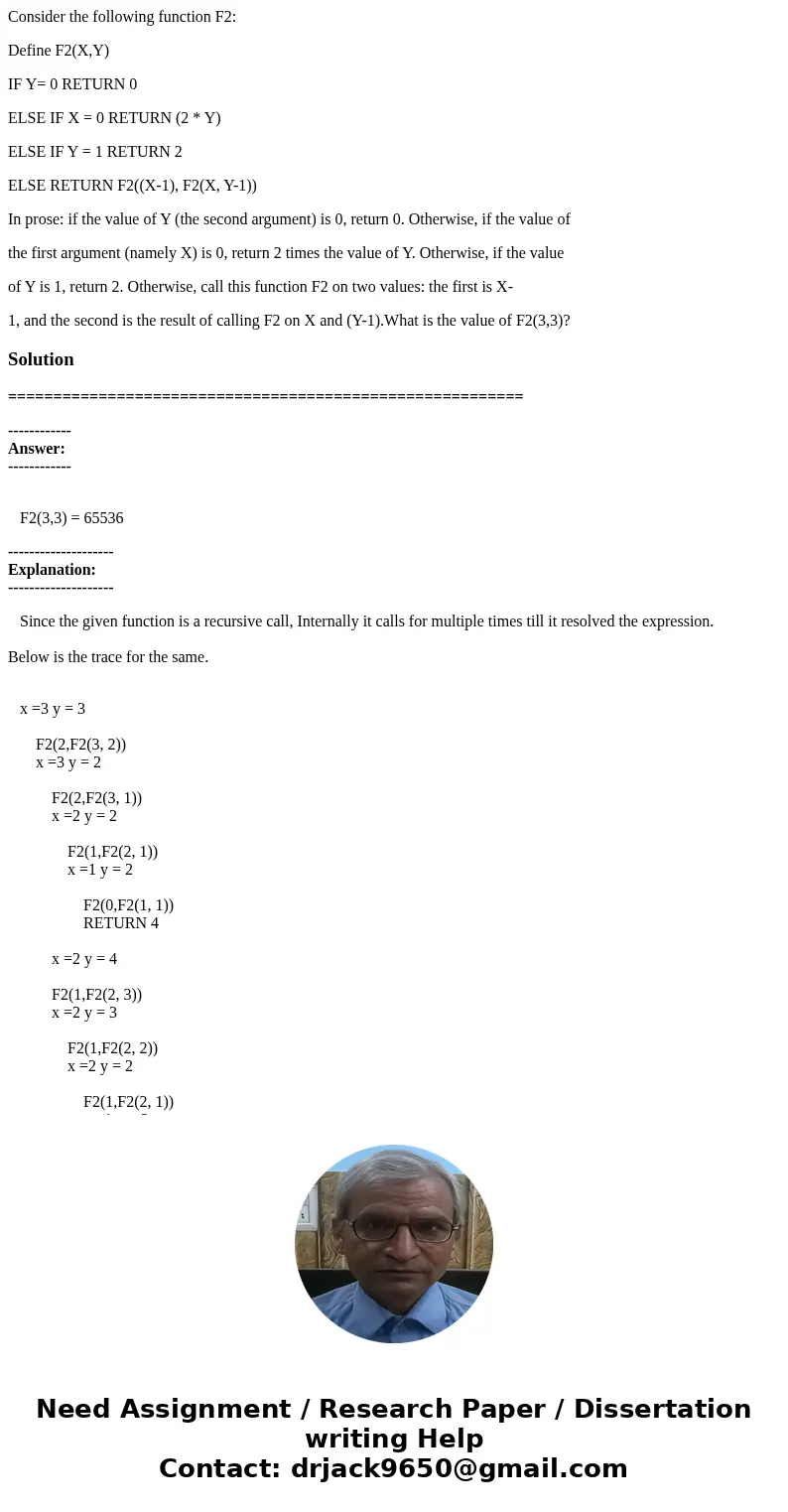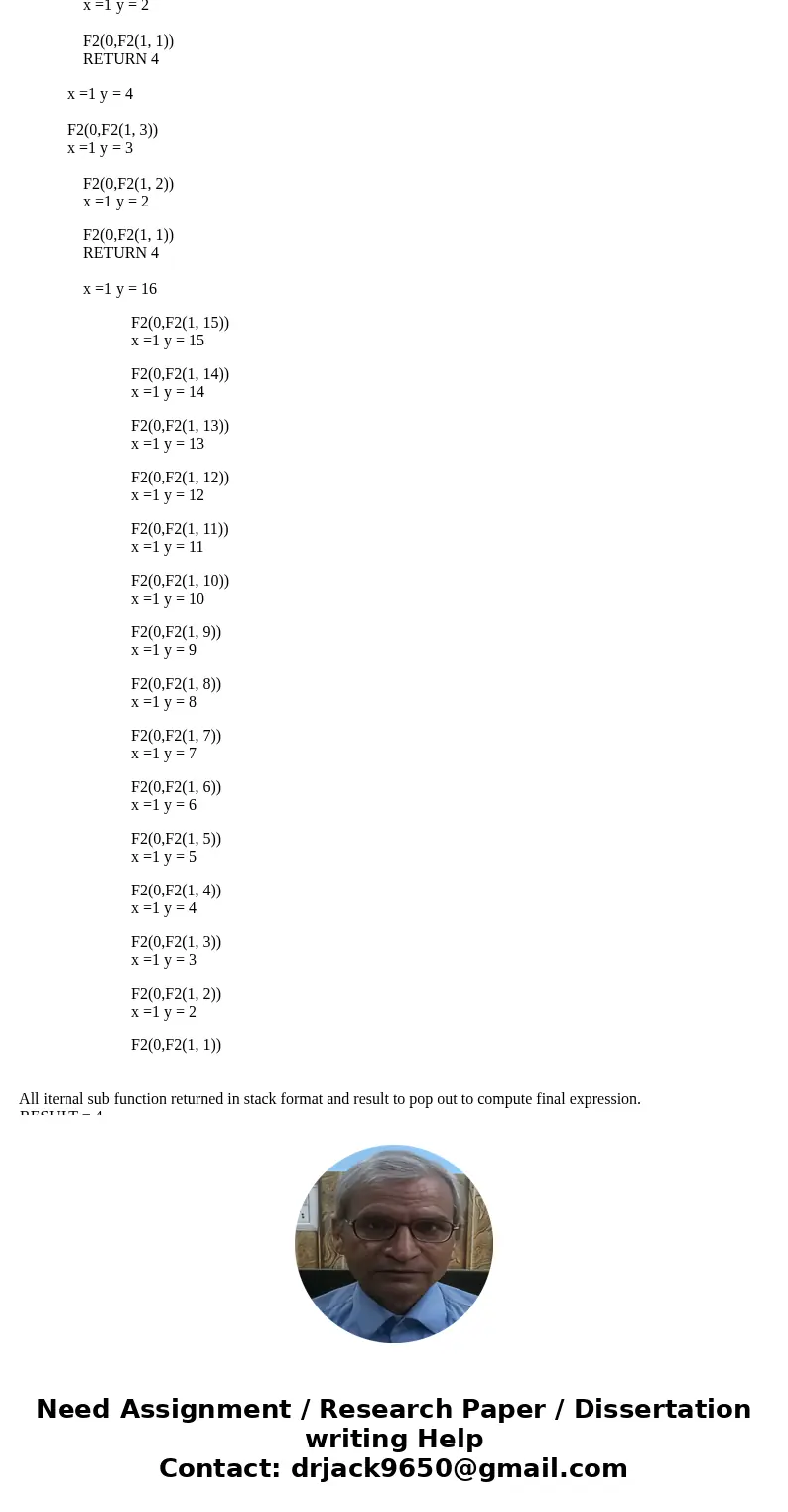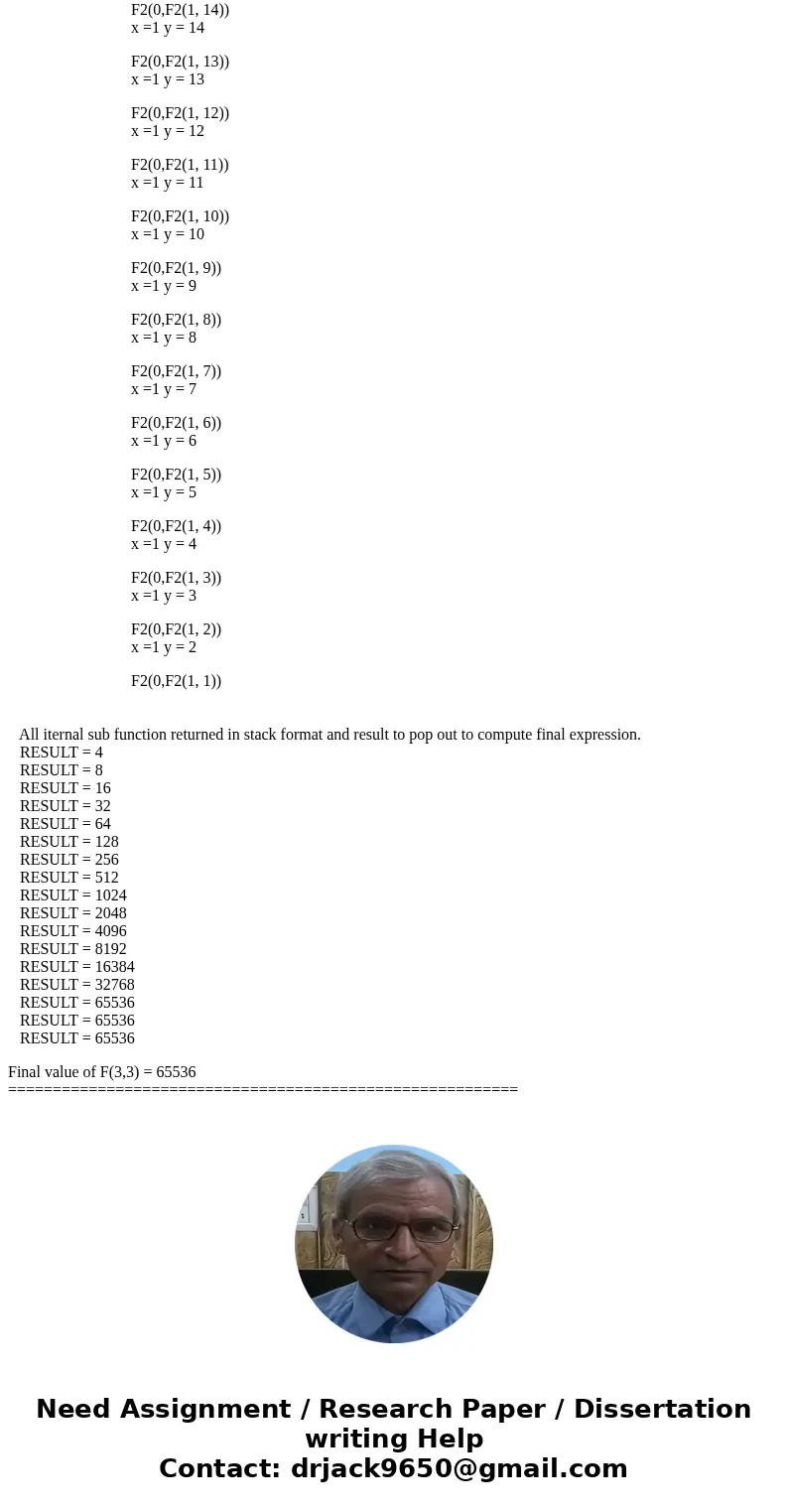Consider the following function F2 Define F2XY IF Y 0 RETURN
Consider the following function F2:
Define F2(X,Y)
IF Y= 0 RETURN 0
ELSE IF X = 0 RETURN (2 * Y)
ELSE IF Y = 1 RETURN 2
ELSE RETURN F2((X-1), F2(X, Y-1))
In prose: if the value of Y (the second argument) is 0, return 0. Otherwise, if the value of
the first argument (namely X) is 0, return 2 times the value of Y. Otherwise, if the value
of Y is 1, return 2. Otherwise, call this function F2 on two values: the first is X-
1, and the second is the result of calling F2 on X and (Y-1).What is the value of F2(3,3)?
Solution
=========================================================
------------
Answer:
------------
F2(3,3) = 65536
--------------------
Explanation:
--------------------
Since the given function is a recursive call, Internally it calls for multiple times till it resolved the expression.
Below is the trace for the same.
x =3 y = 3
F2(2,F2(3, 2))
x =3 y = 2
F2(2,F2(3, 1))
x =2 y = 2
F2(1,F2(2, 1))
x =1 y = 2
F2(0,F2(1, 1))
RETURN 4
x =2 y = 4
F2(1,F2(2, 3))
x =2 y = 3
F2(1,F2(2, 2))
x =2 y = 2
F2(1,F2(2, 1))
x =1 y = 2
F2(0,F2(1, 1))
RETURN 4
x =1 y = 4
F2(0,F2(1, 3))
x =1 y = 3
F2(0,F2(1, 2))
x =1 y = 2
F2(0,F2(1, 1))
RETURN 4
x =1 y = 16
F2(0,F2(1, 15))
x =1 y = 15
F2(0,F2(1, 14))
x =1 y = 14
F2(0,F2(1, 13))
x =1 y = 13
F2(0,F2(1, 12))
x =1 y = 12
F2(0,F2(1, 11))
x =1 y = 11
F2(0,F2(1, 10))
x =1 y = 10
F2(0,F2(1, 9))
x =1 y = 9
F2(0,F2(1, 8))
x =1 y = 8
F2(0,F2(1, 7))
x =1 y = 7
F2(0,F2(1, 6))
x =1 y = 6
F2(0,F2(1, 5))
x =1 y = 5
F2(0,F2(1, 4))
x =1 y = 4
F2(0,F2(1, 3))
x =1 y = 3
F2(0,F2(1, 2))
x =1 y = 2
F2(0,F2(1, 1))
All iternal sub function returned in stack format and result to pop out to compute final expression.
RESULT = 4
RESULT = 8
RESULT = 16
RESULT = 32
RESULT = 64
RESULT = 128
RESULT = 256
RESULT = 512
RESULT = 1024
RESULT = 2048
RESULT = 4096
RESULT = 8192
RESULT = 16384
RESULT = 32768
RESULT = 65536
RESULT = 65536
RESULT = 65536
Final value of F(3,3) = 65536
=========================================================



 Homework Sourse
Homework Sourse